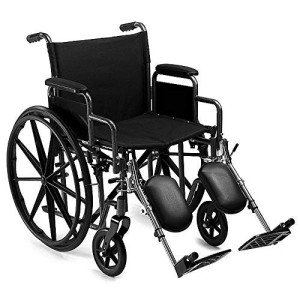10 Things Everyone Hates About Bariatric Wheelchair Recliner

Bariatric Wheelchair Recliner
For users with bigger mobility needs, a bariatric wheelchair recliner uses more convenience and convenience. These specialized chairs are constructed to accommodate much heavier weight capabilities, have broader seat dimensions and more resilient building.
Nevertheless, they likewise need more area and are frequently bigger than standard wheelchairs. This can make them more hard to maneuver in restricted areas.
Seating Options
Unlike regular wheelchairs, bariatric models have the ability to manage more weight without losing stability or resilience. They are frequently wider and function enhanced elements for extra strength and longevity. They likewise utilize specialized upholstery that is resilient, anti-microbial, and simple to clean. Specialized cushioning can assist avoid pressure injuries such as sores and ulcers for those who invest extended periods of time in their chairs.
Bariatric wheelchairs should be sized and fitted by an ATP or OT to guarantee that they supply precise fit and convenience for the user. An extensive evaluation includes determining seat-to-shoulder, hip-to-heel, and armrest-to-armrest ranges to determine if a bariatric design is best for the person. This evaluation is important for guaranteeing that the chair fits well and provides the right amount of support, comfort, and mobility to assist the individual stay active.
A great bariatric chair ought to be capable of reclining for comfortable meals and other activities. It must also be able to facilitate sit-to-stand transfers to avoid caretaker strain and injury. The very best bariatric wheelchairs are geared up with lateral and front-to-back assistance to make this process easier.
Other features of bariatric wheelchairs include adjustable placing for enhanced posture and to alleviate seating-related discomfort. For example, chairs with an anterior tilt can assist in facilitating transfer and enhance lifestyle for those with restricted mobility by making it easier to get in and out of bed. For people with increased threat of pressure ulcers, a bariatric wheelchair that provides remarkable pressure redistribution is essential. For circumstances, Broda's models with Comfort Tension Seating help in reducing the risk of pressure ulcers by providing optimum fit and by distributing body weight equally.
Recliner Mechanism
Bariatric wheelchair reclining chairs offer the strength and stability of a sturdy chair with the benefit of a reclining back. They can be utilized in medical facilities, long term care facilities, and home settings to help enhance the quality of life for individuals with obesity-related health conditions. The sturdier frames and larger seats permit bigger users to move more conveniently while helping prevent injury to the user and those assisting with transfers.
The Chariot IV XTC-RC bariatric wheelchair has balanced out rear wheels to add stability and uniformly distribute the patient's weight while in various reclining positions. Its durable flame retardant nylon upholstery withstands mildew and bacteria. A spreader bar acts as a back stabilizer and provides a convenient push deal with for an attendant. Other features include tool-free adjustable elevating leg rests and a padded headrest.
Footrests
In a completely reclined position, the back-rest is tilted forward towards the center of gravity to reduce the user's head and neck motion. This reduces the need for consistent repositioning and decreases the possibility of pressure sores caused by repeated rubbing. It likewise enables users with a kyphosis, or hunched back, to raise the location of vision to prevent look strain.
Created to accommodate bariatric users, these wheelchairs are geared up with swingaway footrests that retract when not in use to supply unblocked access to the user's front wheels and to help with side transfers. They are also strengthened at vital load-bearing points and include a chart pocket on the back upholstery. They have 24" x 1" black plastic wheels and non-marking polyurethane tires. Front rigging with heel loops is basic on the swingaway footrests.

Armrests
A bariatric wheelchair recliner permits a user to rest in an inclined position, taking pressure off the hips and back while also distributing weight equally. This kind of chair is usually more comfy than basic wheelchairs, and it's offered in a broad variety of seat sizes and arm styles to accommodate users of any size. bariatric wheel chair is another particular that sets a bariatric wheelchair recliner apart from a basic wheelchair. Strong cross braces, strengthened gussets and extra-large riggings offer extra stability and safety.
A reclining bariatric wheelchair also features a padded headrest and cushioned footplates, which help lower pressure sores. The armrests are also padded to assist users keep a natural posture while sitting in the chair. In addition, lots of reclining bariatric wheelchairs have an elevated footrest option to help decrease discomfort from prolonged standing in one position.
There are several various types of wheelchair armrests available, consisting of butterfly armrests that bend external like a butterfly to avoid the user from being squeezed while getting in and out of the chair. These armrests are developed to be easier to grip than straight, short arm rests on standard wheelchairs, making it simpler for bariatric users to get in and out of the chair.
Other alternatives consist of a molded foam arm trough that can be mounted to the armrests of any wheelchair to assist manage undesirable lateral leaning. These arm troughs are simple to clean and fulfill California Flammability requirements. They are likewise breathable to help minimize the risk of skin inflammation.
Another wheelchair armrest option is a padded desk length. These armrests are simple to tidy and can be trimmed to match the height of any user's wheelchair. These are also perfect for usage at a desk or table due to the fact that they provide a comfortable place to rest the arms while working or eating. Most wheelchairs can be fitted with these armrests, and they are often consisted of in package with the chair when acquired.
